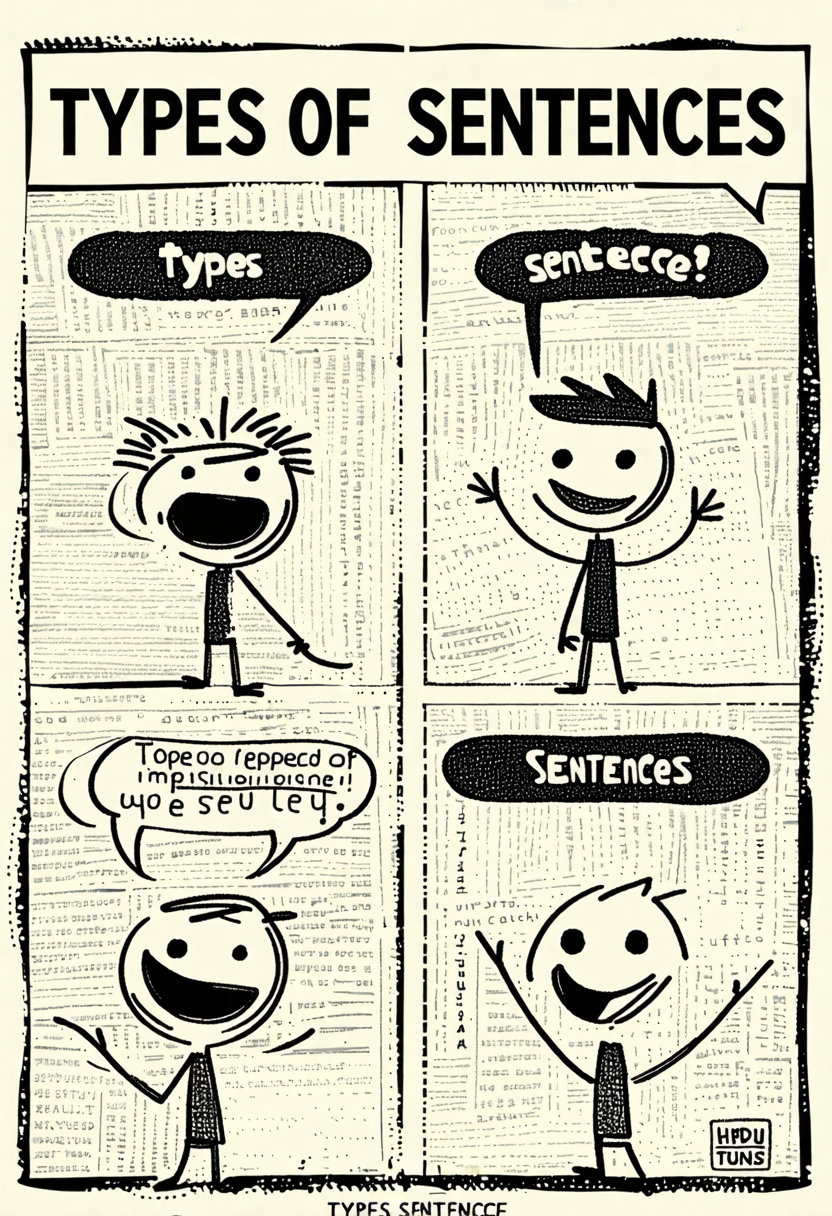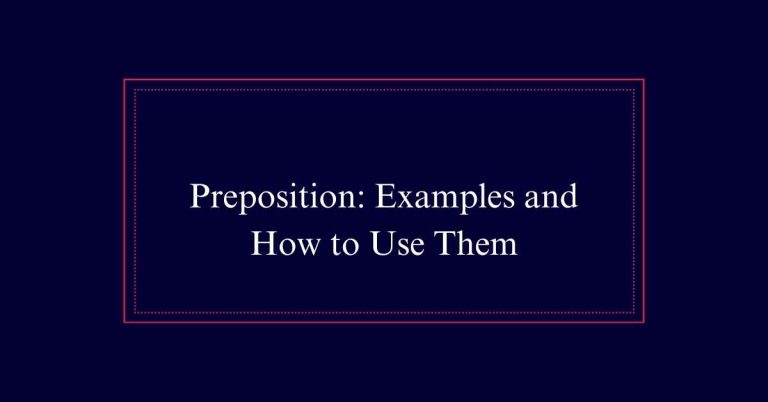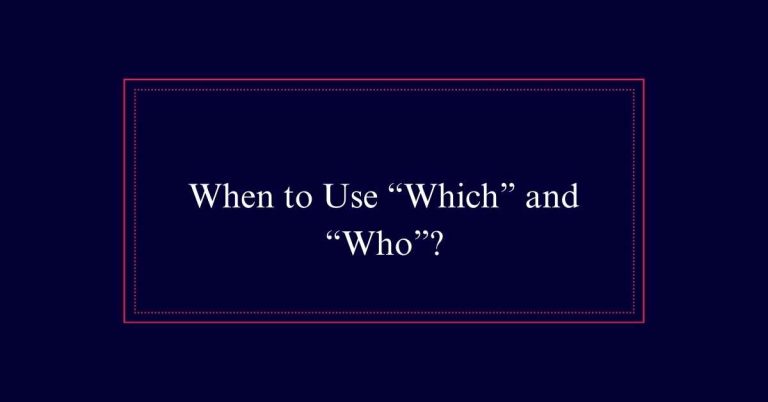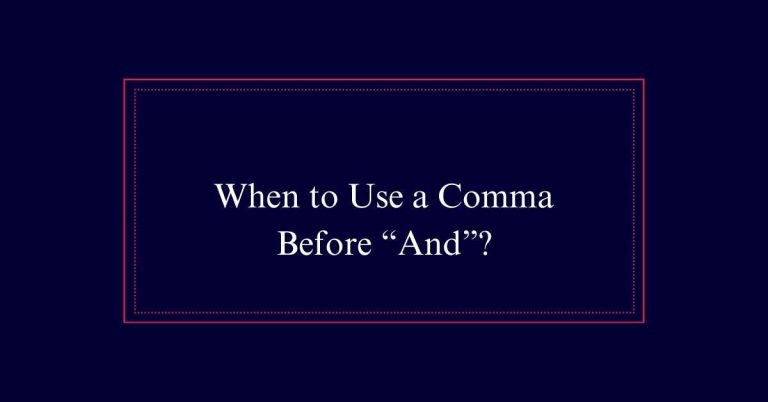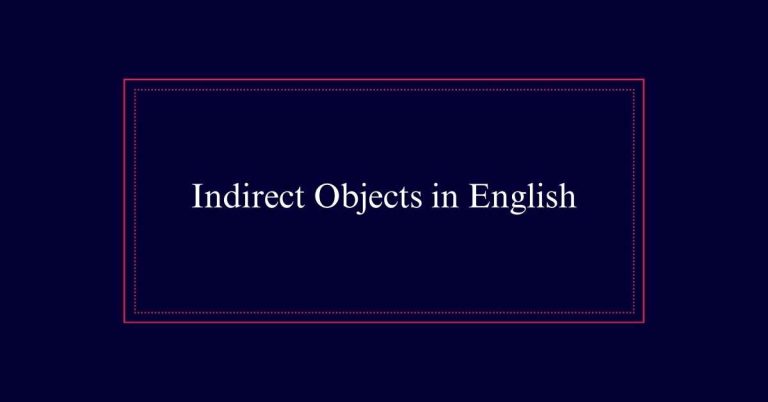4 Types of Sentences
Understanding the four types of sentences is essential for clear communication. Declarative sentences convey facts and opinions, making them common in everyday dialogue. Interrogative sentences ask questions, essential for obtaining information. Imperative sentences issue commands or instructions, guiding actions effectively. Exclamatory sentences express strong emotions, highlighting feelings or urgency.
Declarative Sentences
To conclude, declarative sentences are essential for conveying facts, opinions, and observations in clear and straightforward language. These sentences serve as the primary means of communication in both written and spoken forms. They are straightforward statements that end with a period.
Declarative sentences are pivotal in delivering information without ambiguity or emotion. They are used extensively in daily communication, academic writing, and professional contexts. By providing clear and concise information, they help readers and listeners understand the content easily. Declarative sentences can vary in length but must always maintain clarity.
They form the backbone of effective communication, ensuring that messages are conveyed accurately and efficiently. To sum up, declarative sentences are foundational to clear and effective discourse.
Examples of Declarative Sentences
Providing clear and straightforward information, these sentences serve as the backbone of effective communication. Declarative sentences make statements or provide facts, opinions, and explanations. They are essential for conveying information in a clear and concise manner.
Here are some examples to illustrate:
- Bears don’t eat when they hibernate.
- He didn’t like the movie as much as his partner did.
- In my opinion, James Joyce’s *Ulysses* is too long.
- The sky is blue on a sunny day.
These examples highlight how declarative sentences are used in everyday language to share knowledge, express thoughts, and describe observations. They always end with a period, ensuring a definitive conclusion to the statement.
Interrogative Sentences
Interrogative sentences are used to ask questions and seek information. They are vital for communication, allowing individuals to request details, clarify doubts, or gather opinions.
These sentences typically begin with question words such as who, what, where, when, why, and how. Additionally, they can start with auxiliary verbs like do, does, did, is, are, and can.
Interrogative sentences always end with a question mark, distinguishing them from other sentence types. They play an essential role in both written and spoken language, facilitating interactions and promoting understanding.
Examples of Interrogative Sentences
Examples of interrogative sentences help illustrate how questions are structured and used in communication. They are fundamental in seeking information, clarifying doubts, and engaging in dialogue. Here are four examples that showcase their variety:
- What is your next class?
- This question seeks specific information about someone’s schedule.
- Did you see the fireworks last night?
- This example inquires about a past event, aiming to confirm an experience.
- We’re going in the right direction, aren’t we?
- Here, the speaker seeks reassurance and confirmation.
- Why did the project get delayed?
- This question probes for reasons behind a specific outcome.
These examples highlight how interrogative sentences function in everyday scenarios.
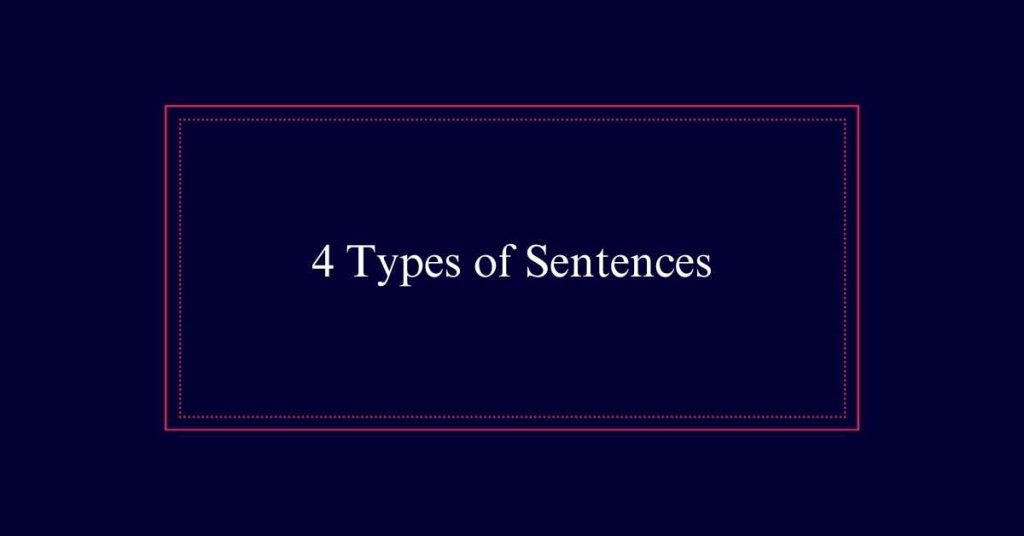
Imperative Sentences
In contrast to seeking information, imperative sentences are used to issue commands, give instructions, or offer advice. These sentences are vital in daily communication. They can be simple or complex, but their primary purpose is to direct action.
The subject of an imperative sentence is often implied and not directly stated, typically understood to be ‘you.’ For instance, in ‘Close the door,’ the subject ‘you’ is implied.
Imperative sentences often end with a period but can also end with an exclamation mark to convey urgency or strong emotion. They are essential in both written and spoken language for providing clear direction.
Understanding imperative sentences ensures effective communication, especially in instructional or directive contexts.
Examples of Imperative Sentences
Imperative sentences are essential for issuing clear and direct instructions or commands. They play a vital role in everyday communication, guaranteeing tasks are understood and completed efficiently.
Here are four examples of imperative sentences to illustrate their use:
- Sweep the floor before you mop it.
This command instructs someone to clean the floor in a specific order.
- Please type these notes and then email me a copy.
This polite request asks someone to complete two tasks sequentially.
- Don’t hang up!
This urgent command instructs someone to stay on the phone.
- Turn off the lights when you leave.
This reminder ensures energy conservation by turning off lights.
Exclamatory Sentences
To conclude, exclamatory sentences convey strong emotions or a sense of urgency, often adding emphasis to the message. These sentences are designed to express excitement, surprise, anger, or other intense feelings. They are easily identifiable by their punctuation, always ending with an exclamation mark (!).
This punctuation mark helps to highlight the emotional tone of the sentence, making the reader or listener take notice. Exclamatory sentences are direct and impactful, cutting through the mundane to deliver a powerful message.
While they are useful in both written and spoken communication, their frequent use should be avoided in formal writing to maintain professionalism. To sum up, exclamatory sentences are a key tool for emphasizing emotions and urgency.
Examples of Exclamatory Sentences
Here are several examples of exclamatory sentences to illustrate their use in expressing strong emotions and urgency. Exclamatory sentences are essential for conveying intense feelings and drawing attention. They often end with an exclamation mark to emphasize the sentiment.
Here are a few examples:
- ‘What a beautiful sunset!’ – expresses admiration.
- ‘I can’t believe we won the game!’ – conveys excitement.
- ‘Watch out for that car!’ – signals urgency and concern.
- ‘This is the best day ever!’ – shows extreme joy.
These sentences effectively communicate an emotional response, making them powerful tools in writing and speech. They capture the reader’s or listener’s attention, ensuring that the conveyed emotion is felt strongly.
Sentence Types by Structure
In addition to categorizing sentences by function, it’s important to understand the different types of sentences based on their structure. There are four primary types: simple, compound, complex, and compound-complex sentences.
Simple sentences contain one independent clause and can have multiple subjects or predicates. Compound sentences have more than one independent clause, joined by a semicolon or coordinating conjunction.
Complex sentences include an independent clause and at least one subordinate clause. Compound-complex sentences combine these elements, featuring multiple independent clauses and at least one subordinate clause.
Each type of sentence structure serves a distinct purpose in communication, enhancing the clarity and depth of expression. Understanding these structures helps in crafting varied and effective sentences.
Examples of Sentence Structures
Examining examples of sentence structures can illustrate how different types of sentences function in various contexts. Here are some examples:
- Simple Sentence: Contains one independent clause. Example: ‘Today is my only day off this week.’
- Compound Sentence: Contains more than one independent clause, joined by a semicolon or coordinating conjunction. Example: ‘We wanted to eat fast food, but our parents made dinner instead.’
- Complex Sentence: Includes a subordinate clause that depends on an independent clause. Example: ‘The marching band paraded through the street while I was sleeping.’
- Compound-Complex Sentence: Contains a subordinating clause and more than one independent clause. Example: ‘Say goodbye to grandma, and then we’ll leave before it starts snowing.’
Frequently Asked Questions
What Is the Difference Between a Simple and a Compound Sentence?
A simple sentence contains one independent clause, while a compound sentence has two or more independent clauses joined by a semicolon or a coordinating conjunction, such as “and,” “but,” or “or.”
How Do Conditional Sentences Fit Into Sentence Structure Types?
Conditional sentences fit within complex sentence structures. They include an independent clause and a dependent clause introduced by “if” or other conditional terms. This type of sentence outlines conditions and their potential outcomes.
Can a Sentence Be Both Imperative and Exclamatory?
A sentence can indeed be both imperative and exclamatory. This occurs when a command or request is given with strong emotion or urgency, typically ending with an exclamation mark. Example: “Close the door now!”
What Are Some Examples of Compound-Complex Sentences in Literature?
Examples of compound-complex sentences in literature include, “Though it was raining, the match continued, and the fans cheered,” and “When he finally arrived, he saw the mess, but he remained calm.”
How Do You Identify Subordinate Clauses in Complex Sentences?
To identify subordinate clauses in complex sentences, look for clauses that cannot stand alone as complete sentences. These typically begin with subordinating conjunctions like “while,” “because,” “if,” or “when,” and depend on the main clause.
